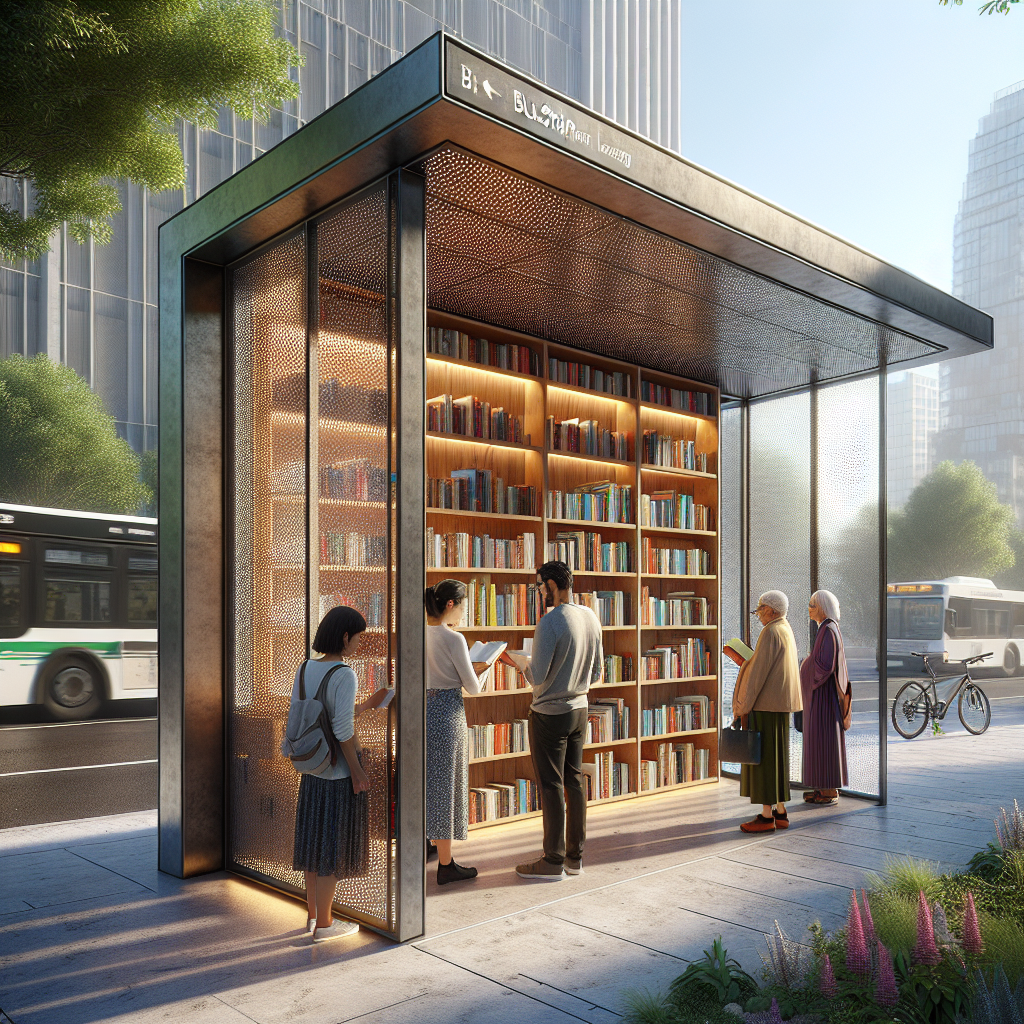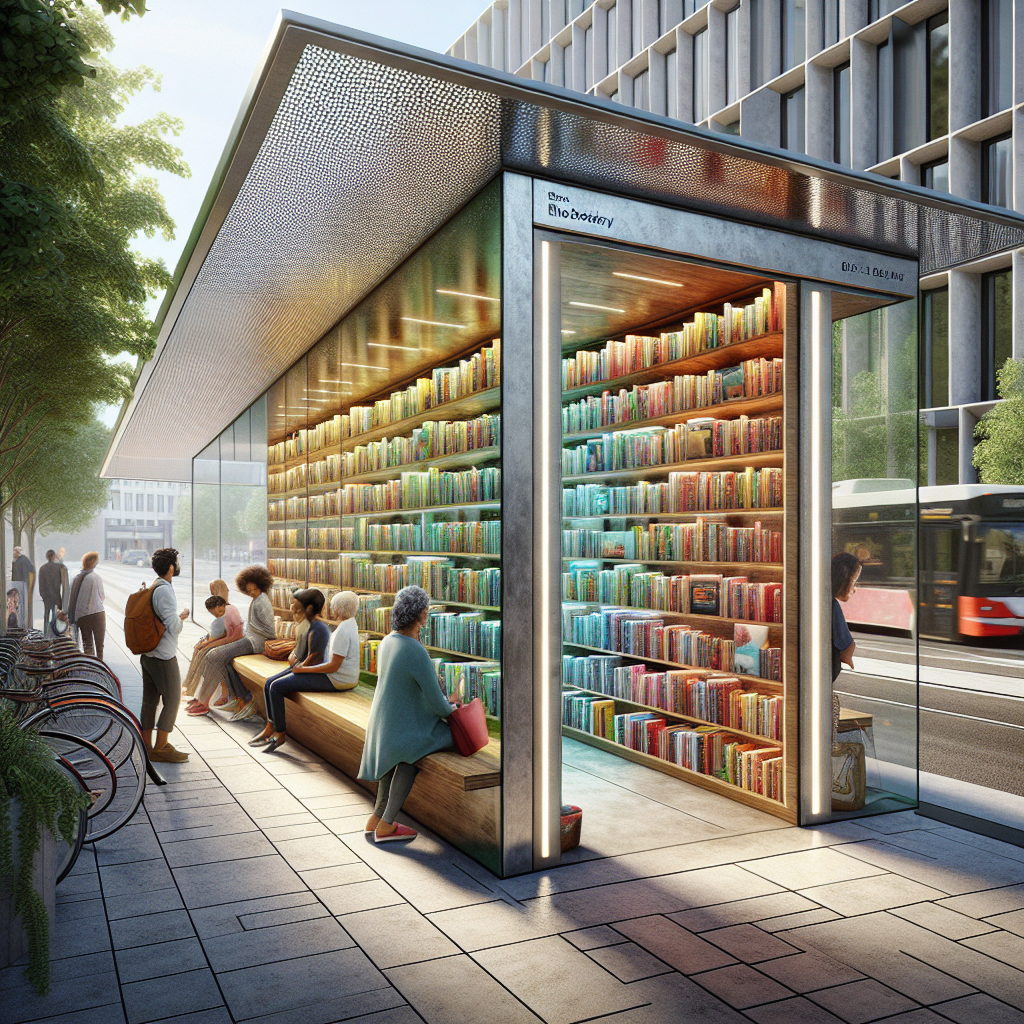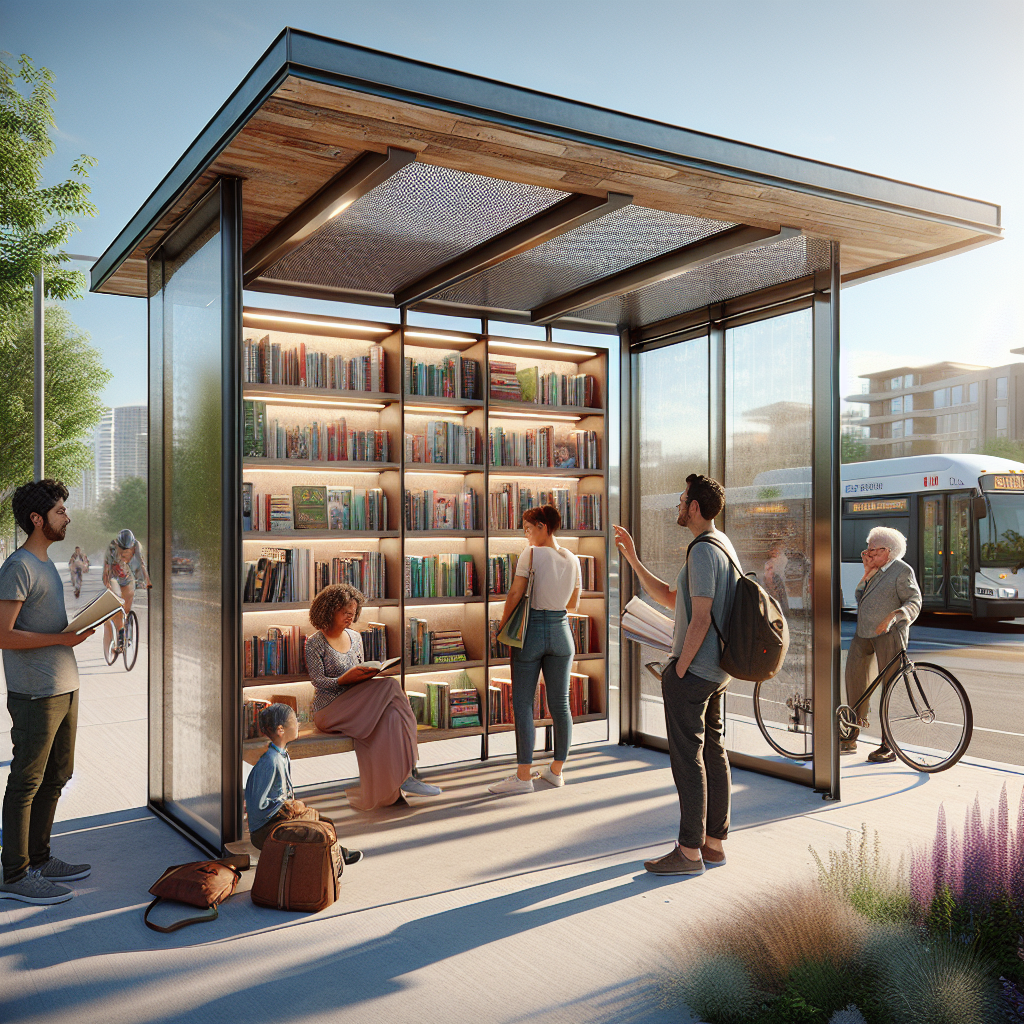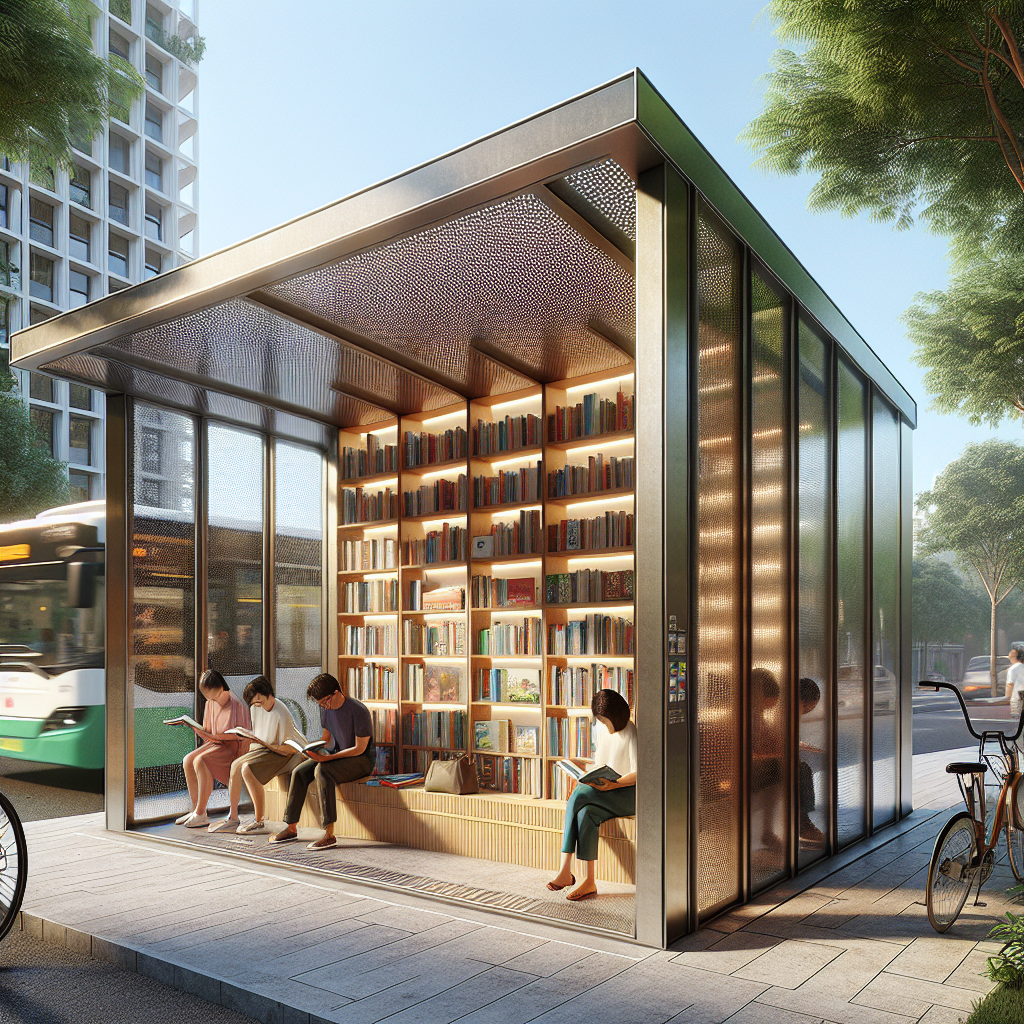Micro-libraries in public: transit integrating bookshelves into bus stops

Micro-Libraries in Transit: How Bus Stops Are Becoming Urban Reading Rooms
In an era where public infrastructure is being reimagined as more than just a conduit for movement, a quiet revolution is taking place at the city’s edge—at the bus stop. Across the world, micro-libraries integrated into transit shelters are transforming mundane waiting areas into hubs of culture, learning, and community. These compact, open-access bookshelves are not only redefining how we interact with public space but also challenging designers and architects to think differently about the intersection of mobility, literacy, and urban design.
The Rise of the Micro-Library Movement
The concept of the Little Free Library—a small, community-managed book exchange—has evolved from suburban front yards into the arteries of metropolitan life. By embedding these miniature libraries into public transit infrastructure, cities are extending the philosophy of shared culture into spaces of everyday transit. The idea is elegantly simple: while waiting for a bus, a commuter can borrow a book, read a few pages, or even leave one behind for the next traveler.
In Seoul, the “Book Bus Stop” initiative has turned glass shelters into transparent reading capsules, where wooden shelves float beneath digital timetables. In Bogotá, bus terminals host rotating collections curated by local librarians. And in Copenhagen, modular reading pods are being trialed as part of the city’s “Human-Centered Transit” program—an effort to merge biophilic design principles with public mobility systems.
Designing for Pause: Architecture Meets Literacy
For architects, the integration of micro-libraries into transit design represents a fascinating challenge: how to create a space of stillness within a system of motion. Bus stops are typically designed for efficiency and visibility, not contemplation. Yet the addition of bookshelves introduces a new typology—one that invites lingering, reflection, and exchange.
Design studios experimenting with this model are employing materials and forms that evoke warmth and tactility. Shelves made from reclaimed timber or recycled aluminum contrast with the cold glass and steel of typical shelters. Some designs feature perforated metal panels that filter sunlight onto the spines of books, creating a dynamic play of shadow and texture. Others integrate solar-powered lighting, ensuring the books remain visible after dusk, turning the stop into a softly glowing beacon of literacy.
In Singapore, the “Read While You Wait” prototype by DP Architects uses curved acrylic panels etched with literary quotes, creating a sense of enclosure without isolation. The structure’s semi-transparency allows commuters to feel connected to the street while immersed in a cocoon of quiet engagement—a design ethos reminiscent of the micro-living movement, where intimacy and function coexist within minimal footprints.
Urban Reading as a Social Connector
Beyond aesthetics, the social implications of micro-libraries in transit are profound. According to a 2023 UNESCO report, access to books in public spaces can increase community literacy engagement by up to 30%. When placed in transit nodes—where socioeconomic and cultural demographics intersect—these libraries become equalizers of access. They democratize culture in a way that digital platforms often fail to achieve.
Architects and planners are increasingly recognizing that urban design is a form of social choreography. The micro-library, in this sense, acts as a subtle intervention—an invitation to slow down, to share, to connect. It echoes the principles explored in designing public spaces for people and the environment, where inclusivity and human engagement take precedence over pure functionality.
In São Paulo, the city’s “Biblioponto” project has transformed over 150 bus shelters into reading points, with local volunteers maintaining the collections. The result is not just a network of books but a network of people—micro-communities forming around shared curiosity. Each shelf becomes a snapshot of its neighborhood’s personality, reflecting the titles that pass through it.
Materiality and Maintenance: The Practical Side of Beauty
While the idea of a bookshelf at a bus stop sounds romantic, the practicalities of weather, vandalism, and maintenance require rigorous design thinking. Architects are responding with inventive material strategies. In Helsinki, designers use marine-grade plywood sealed with bio-resin to withstand humidity and snow. In Melbourne, laser-cut steel enclosures with transparent polycarbonate fronts protect books from rain while allowing visual access. The tactile appeal of these materials is as important as their durability—they must invite touch, not repel it.
Some cities are experimenting with smart micro-libraries equipped with sensors that track borrowing patterns and environmental conditions. This data-driven approach aligns with the broader trend of smart urban mobility, where design and technology converge to enhance public experience. By understanding how people interact with these spaces, designers can refine future iterations—optimizing shelf height, lighting, and placement to maximize engagement.
Ecological and Cultural Sustainability
Micro-libraries also resonate with the growing movement toward sustainable and circular design. Many are constructed from upcycled materials—discarded bus shelter panels, old street signs, or reclaimed wood from decommissioned furniture. This reuse not only reduces waste but also embeds the library with a narrative of continuity and care. The approach mirrors the ethos of zero-waste architecture, where every component is designed for longevity and adaptability.
Moreover, these installations foster cultural sustainability by keeping physical reading alive in an increasingly digital world. In Tokyo’s Shibuya district, for instance, micro-libraries at bus stops are curated around local authors and themes, reinforcing neighborhood identity. The tactile act of selecting a book—its weight, its scent, its typography—becomes a sensory counterpoint to the algorithmic feeds that dominate our daily lives.
Case Study: The Helsinki Reading Stop
Among the most celebrated examples is the Helsinki Reading Stop, designed by JKMM Architects in collaboration with the city’s public library network. The structure, a minimalist glass pavilion framed in pale birch, features an integrated bookshelf running along its inner wall. The shelf is protected by a transparent sliding panel that opens with a gentle push, inviting users to browse. The books are arranged by color rather than genre, creating a visual rhythm that complements the surrounding urban landscape.
LED strips embedded beneath the shelf emit a soft amber glow at night, transforming the stop into a lantern-like presence. The project exemplifies how architectural restraint can yield emotional richness. It’s not just a shelter—it’s a civic gesture, a small act of generosity rendered in timber and glass.
Designing for the Future of Public Literacy
As cities grapple with questions of sustainability, inclusivity, and digital saturation, the micro-library at the bus stop offers a poetic yet practical model for future urban interventions. It embodies the principles of human-centered design—accessible, adaptable, and deeply local. It also aligns with the broader trend of reprogramming public infrastructure for multiple uses, a theme increasingly visible in post-pandemic urbanism.
Architects and designers are beginning to view these installations not as isolated novelties but as part of a larger ecosystem of civic micro-architecture. Just as pocket parks and pop-up galleries have redefined urban leisure, micro-libraries are redefining urban literacy. They remind us that design’s most profound impact often lies not in monumental gestures but in small, repeatable acts of care.
In the words of Finnish architect Asmo Jaaksi, “The future of cities will be written in the margins—on the benches, the bus stops, the in-between spaces where design meets daily life.” The micro-library, in all its modesty, might just be one of those margins where a new chapter of urban culture begins.








